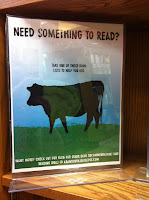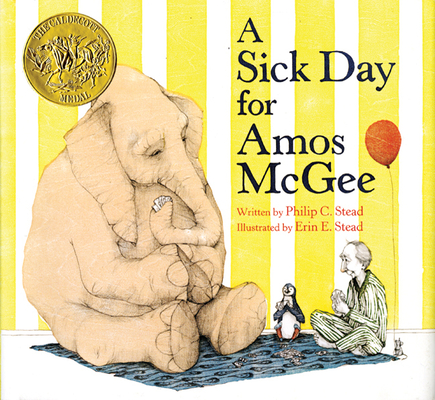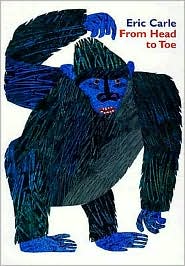
The first week of summer reading ends today, and I thought it would be worthwhile to look back on everything that's gone on at the library this week and check the raw numbers.
First, a little explanation: I'm running three programs this year. One is for
pre-readers (those birth through 4), youth (4 to 12) and teens (12-18). I'm pretty forgiving in flexibility, as I let 4 year
olds do the youth program, 11 and 12 year
olds do teen, and I've let a 19 year old do teen, too.
For
pre-readers, parent and child work together to complete 30 activities together. You can check out the activity sheet right here. It's meant to give them literacy, print awareness, sound appreciation, and other activities to work on as parent-child and reward them for it.
For youth, children get a reading log, with each image indicating 15 minutes of reading. They can read alone or with a parent/sibling and
audiobooks count. Their reading log looks like
this. Both youth and
pre-readers can also complete weekly check lists of activities, and all eight weeks of activities look like
this.
Teens also get reading logs, and theirs are in 30 minute increments. Their logs look like
this. They can also complete a teen summer passport, which is the same idea as the youth activity logs, except they only get one log all summer long, which looks like
this.
After almost a week of summer reading club, we have 40 signed up for the
pre-reader club, 193 signed up for the youth club, and 66 signed up for the teen club. Can I say that last year, at the conclusion of the summer reading club, there had only been 56 teens total? I'm thrilled with this week's turn out for them, especially.
During the summer, I have activities planned for every day of the week -- Mondays through Fridays, so this was the first week we were went through all of them, and they were a blast. Here's what we did!
Saturday
We had our kick off event, wherein we brought a magician, and we had a huge sign up push. We had 55 attend the magician's show, which was a little bit of a bummer number for me -- but the magician was excellent, and I would, without a doubt, bring him out again. He was great with the kids, and his humor worked perfectly for the adults, too. And boy, were my kids eager to be volunteers for his tricks!
Monday
We had a laid back, all ages program of
games and
legos. I pulled out a box of board games and dumped out my
legos, and let the kids go to town. We had 20 attend this program, where I laid on the floor and played a pretty amazing game of
Memory with a 6-year-old and a 12-year-old. I was happy to announce I beat the 6 year old, but the 12 year old completely kicked my butt.
Of course, all of the kids who made
lego creations got to display them in the children's area -- and that is, without doubt, my favorite part of
lego club. I didn't initially bring out the index cards for kids to put a name for their creation down, but they
begged me for them, so I obliged.
 Tuesday
Tuesday
We had our big all ages program in the outdoor tent in front of the library. We had an art party, where four staff members brought a craft for the kids to do. It was a bit of pandemonium, as we had 110 attend this program.
Since this year's theme was world travel, each craft had something to do with a foreign country. The kids made god's eyes (Mexico), paper crocodiles (Australia), fans (Japan), and harlequin masks (Italy, pictured at left). My coworkers did an amazing job helping the kids out, as I was busy running around making sure everyone was covered for supplies, ducking in and out of the building to tackle any questions that came up.
I would do this sort of program again, but I'd definitely set up more tables. I was going to be thrilled if we had 60 or 70 attend this program, so 110 was excellent. This program was quite inexpensive, as most supplies were on hand already. I believe I spent $40, and I think another coworker spent about that. For 110 kids, we spent about $.50 a kid, which is amazing.
Wednesday
This was my
tweens-only program -- the first of its kind at the library. I decided it was important to give 9-12 year
olds their own program this year, with activities geared only toward them. Sure, it's a lot of work to do this much, but the return on investment was insane. Our first program? Duct tape creations.
I planned for about 20 kids. When I went to
Walmart for tape, I thought I'd gone a little overboard on buying tape.
You can make that judgment to the right here. I personally knew how to make wallets and flip flops, so I pulled out a couple examples and raided our recycling room for cardboard. I laid it all out, and I told the kids as they came in to go to town, but they could find me to help them any time.
They knew EXACTLY what they wanted to do. It was incredible to see -- wait for it -- 40 kids (!!) show up for this program. Most knew what they wanted to make and went to town, while others came and had me walk them through (or in some cases, make for them) wallets and flip flops.
I love this age group. They are completely respectful and caring, and they all cleaned up after themselves. They were incredibly creative and funny, and spending an hour and a half of them was a blast. I'm so eager to see them again next week.
Perhaps what struck me as most valuable about this program was that it drew in a significant number of Hispanic youth. We have a large Hispanic population in town (over 30%), but they don't come much to library programs, for many reasons, including that they believe it costs money, that they aren't welcome/there isn't anything for them, that they need a library card to participate, etc. I made it super clear in classroom visits that there was no sign up, no cards necessary, and everything was completely free. To see so many of these kids at the library really made me feel good. I hope this is a trend that continues all summer long.
 Thursday
Thursday
Today was my laid back day at work -- just the teen book club meeting. Though I should say it was, indeed, my favorite program because I love these kids to bits and pieces. They're smart, thoughtful, and love to talk all things books.
This week, we talked about Siobhan Vivian's Same Difference, as Siobhan is coming to the library next week. Talk about a book we had a lot of great things to talk about. Usually, book club discussions run about 30 minutes, and then my teens want to do something active (and, as always, I oblige). This time, we talked an entire hour about this book. The kids loved this book, and they thought Emily (the main character) was one of the most realistic characters they'd read in a long time.
Perhaps what made this particular book club meeting special for me was that I could give my kids this book to keep. With the grant I won, I purchased a ton of these books, and I was able to let them have them. Then, a few others asked for a copy for a friend who would be coming to the event next week, and it felt so nice to say yes, yes, yes.
When we finished our "formal" book discussion (which is never formal), we talked about other books we love. One of my girls gave rapid reactions to a pile of books she'd checked out a couple weeks ago and read, and it was amazing; she'd give her gut reaction then a single statement after which was hilarious. And in the last few minutes before the library closed, I saw all the girls check out piles of books before heading home. Whoever says teens don't read....has never spent time in a real library.
Friday
Obviously, I can't post about it since it hasn't happened, but this is our storytime day. One of my coworkers does our storytimes, but I suspect turn out will be pretty good, since it's the first time back in a month.
Other things
Amid the programming, I found time to put together a few more reader's advisory guides for our teens, which you can find here. I wrote up guides to sports, mystery, and historical fiction this week, and my intern (I'll talk about that in a second!) made up guides to science fiction, fantasy, and fairy tales/fey stories.
I've made up a schedule to keep the teen blog and facebook up to date and active, and I've really enjoyed it. It feels like having a schedule makes it more active and makes me more engaged, too. This week, I posted teen book reviews, linked to a story about free audiobook downloads for teens at sync, and put a contest up for a signed advanced copy of Ellen Hopkins's Perfect.
This summer, I have an intern, and she has been a complete and total life saver. I threw her right in, and she's been so good at helping me with programming, with reader's advisory guide creation, and with the myriad of activities I tackle in a day. She's been instrumental in getting my teen summer school mobile collection processed, and she'll be key in making that a success, too. You'll hear about that more in July! She's doing it for free, but her resume for graduate school and portfolio for a future job will be great -- she's making reader's advisory material because (wait for it) she's reading the books, too, which as we sadly know, isn't the case with all youth/teen librarians.
All in a week's work, and only 7 more weeks to go!

 1/4 strips. I hole punched the top of each and gave the kids red and white ribbon to tie. I ended up doing a lot of the tying but it wasn't a big deal. They wanted their ribbons to look like my sample.
1/4 strips. I hole punched the top of each and gave the kids red and white ribbon to tie. I ended up doing a lot of the tying but it wasn't a big deal. They wanted their ribbons to look like my sample.
 Apologies for the blurry photo! If you're curious, that flag is made up of 93 red beads and 60 white, with 17 columns and 9 rows. I've included the actual pattern below (thanks Mary!):
Apologies for the blurry photo! If you're curious, that flag is made up of 93 red beads and 60 white, with 17 columns and 9 rows. I've included the actual pattern below (thanks Mary!): We did the ironing of the flags when the kids finished putting the beads together, and then they were able to pop the small magnets on the backs themselves. A lot of the tweens found this to be the harder/more frustrating craft, but they all loved the end result (and let me tell you how fun it is to see a bunch of Canadian flags around the library).
We did the ironing of the flags when the kids finished putting the beads together, and then they were able to pop the small magnets on the backs themselves. A lot of the tweens found this to be the harder/more frustrating craft, but they all loved the end result (and let me tell you how fun it is to see a bunch of Canadian flags around the library). this one right here. I picked up all of the small beads at Walmart, but let me tell you this: finding the pins was not easy. I went to multiple stores and had multiple trips before finding enough of the right size pins. Because the right size base pins were essential to fit all of the beads onto. But! There was triumph and we had all of the appropriate pins come program day.
this one right here. I picked up all of the small beads at Walmart, but let me tell you this: finding the pins was not easy. I went to multiple stores and had multiple trips before finding enough of the right size pins. Because the right size base pins were essential to fit all of the beads onto. But! There was triumph and we had all of the appropriate pins come program day.



































